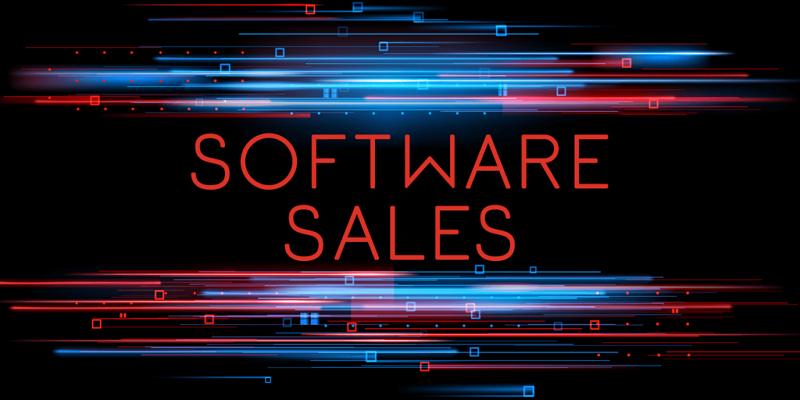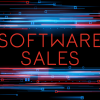In the modern numerical landscape, software reigns almighty as the backbone of our correspondent world. From increasing seamless connection and complementing productivity to refashioning industries and driving modernization, software plays a critical role in Developing how we live, work, and interact with technology. As the demand for software solutions continues to soar, navigating the expansive domain of software for sale has become both a freedom and a challenge for separate businesses.
In this extensive guide, we embark on a journey to explore the different photographs of software for sale, shedding light on the diverse range of products, services, and applications that shape the purchasing process. Whether you’re a seasoned IT qualified seeking to enhance your organization’s digital efficiency or an individual looking for the perfect software solution to unify your daily tasks, this guide aims to equip you with the knowledge, insights, and strategies needed to navigate the complications of software procurement with confidence and clarity.
Before diving into the complexity of software for sale, it’s necessary to accept the significance of software in our digital environments. Software is the microscopic force that powers the devices we use, the functions we rely on, and the involvement we appreciate. It encloses everything from operating systems and production tools to specialized business applications and entertainment platforms, each serving a unique purpose in fulfilling our diverse needs and dreams.
Understanding Software for Sale
Software for sale
Circle various products and services designed to meet multiple needs and requirements. From economic off-the-shelf (COTS) software to custom solutions and software as a service (SaaS) contribution, countless options are available to suit different preferences and budgets. While COTS software provides pre-packaged solutions ready to use out of the box, custom software offers tailored solutions designed to meet specific business needs. Meanwhile, SaaS platforms offer cloud-based software solutions accessed via subscription models, providing scalability and compliance for users.
Types of Software for Sale
Economic off-the-shelf (COTS) software:
COTS software refers to plain food software solutions available for purchase from vendors. Examples include Microsoft Office, Adobe Photoshop, and FreshBooks. These products address ordinary needs and requirements across different industries and sectors. While COTS software offers convenience and economical, it may need more customization options available with custom software solutions.
Custom software
Custom software solutions are bespoke to meet original businesses’ or Management’s needs and requirements. Developed by in-house teams or third-party merchants, customized software solutions offer more excellent animation and are more extensible than off-the-shelf. Examples include operation resource plan (ERP) systems and customer communication.
Executive (CRM) software and bespoke web applications. While custom software solutions require a more significant investment of time and resources, they offer the advantage of being custom-made to the unique workflows and processes of the management.
Software as a benefit (SaaS)
SaaS platforms offer cloud-based software solutions accessed via contribution models. Examples include Salesforce, Google Workspace, and letter box. SaaS explanation provides users access to software functions and services over the internet, excluding the need for foundation and maintenance. SaaS floors offer scalability, flexibility, and ease of access, making them popular for businesses of all sizes.
Still, users must contemplate data security, service uptime, and vendor lock-in when evaluating SaaS options.
Considerations to Consider When Purchasing Software
Cost considerations:
When purchasing software, it’s fundamental to consider upfront costs and long-term expenses. While COTS software may offer lower upfront costs, custom solutions, and SaaS platforms may provide better value over time. Additionally, users should consider licensing models, such as one-time purchases, contributions, or usage-based pricing, to determine the most cost-effective option for their needs.
Compatibility with existing systems:
Compatibility with existing systems and infrastructure is crucial when selecting software for purchase. Users should assess whether the software is compatible with their operating systems, hardware configurations, and other software applications. Integration capabilities and interoperability are also essential, especially for businesses with complex IT environments.
Security and data privacy:
Security and data privacy are outstanding when purchasing software, particularly for businesses handling emotional information. Users should evaluate the security measures furnished by software merchants, including encryption, access controls, and data backup procedures. Furthermore, obedience to regulations such as the Knowledge Protection Improvement (GDPR) and the Health Insurance Flexibility and Accountability Act (HIPAA) may be essential for specific commerce or use cases.
Support and updates:
Access to timely support and software updates is fundamental for continuing the performance and security of purchased software. Users should inspect the freedom of customer support channels, response times, and benefit level agreements (SLAs) when evaluating software vendors. Regular software updates and patches are demanded to address security susceptibility, fix bugs, and introduce new features or improvements.
Steps to Purchasing Software
- Identifying needs and requirements:
Begin by identifying the specific needs and requirements that the software must address. Consider functionality, scalability, ease of use, and budget constraints when defining requirements.
Researching available options:
Research available software options, including COTS solutions, custom development services, and SaaS platforms. Classify factors such as features, pricing, customer reviews, and vendor reputation to narrow the list of potential options.
Evaluating software vendors and products:
Once you’ve identified potential software options, thoroughly classify each vendor and product to ensure they meet your needs and requirements. Request demos, trial versions, or vendor references to assess the software’s suitability for your use case.
- Making a purchasing decision:
Select the software solution that best fits your needs, requirements, and budget based on your evaluations. Consult pricing, licensing terms, and service agreements with the vendor to secure the best possible deal.
Manufacturing and deploying the software
Once the investment agreement has been made, work with the vendor to implement and deploy the software within your organization. Follow best practices for software implementation, including training users, configuring settings, and immigrating data as needed.
Monitoring usage and performance:
After expanding the software, monitor its usage and performance to ensure it meets your confidence and delivers the desired outcomes. Collect user feedback, track key performance indicators (KPIs), and address any issues or concerns arising during enjoyment.
- Challenges and Considerations:
While purchasing software offers many benefits, it also presents several challenges and considerations that users must be aware of:
Potential risks and pitfalls:
Purchasing software involves risks such as vendor lock-in, hidden costs, and unity issues. Users should carefully assess software vendors and products to mitigate these risks and ensure a successful purchase.
Strategies for alleviating risks:
- To reduce the risks identical to purchasing software, users should:
Conduct thorough research and due intensity before making a purchasing decision.
Negotiate favourable terms and quality with software vendors.
Inaugurate clear expectations and requirements upfront to avoid misunderstandings.
Monitor the performance and usage of purchased software to identify and address any issues or concerns.
Importance of ongoing maintenance and support:
Contribution software is not a one-time agreement but an ongoing responsibility that requires regular.
Conservation and support. Customer should budget for successful expenses, such as software updates, technical support, and training, to ensure the long-term success of their software contribution.
Conclusion:
In conclusion, operating software for sale requires careful consideration of various factors, including the type of software, cost discussion, unity with existing systems, security and data privacy, and ongoing support and conservation. By following the steps outlined in this guide and considering the challenges and discussion considered, users can make informed purchasing decisions that align with their needs, requirements, and long-term goals. Whether selecting off-the-shelf solutions, custom development services, or cloud-based platforms, choosing the right software for sale can empower original organizations to achieve their objectives and drive success in a progressively digital world.













